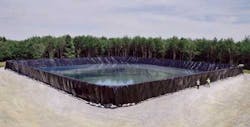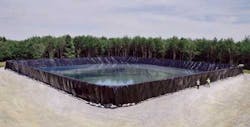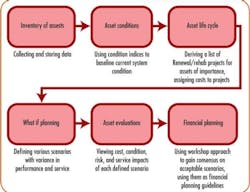Do's and Don'ts of Tracer Wire Systems
By Michael Moore
When designing a water or sewer piping system, how seriously is the design or specification of tracer wire taken? Unfortunately, not nearly as much as the rest of the system. Most water department specifications call out the fire hydrant specifications down to the threads on the riser, but tracer wire has been taken far too lightly with very broad specifications. Some water departments in parts of the country don't use tracer wire at all. Warning tape, detectable tape, bare copper, coated solid copper, copper clad steel, stainless steel, and stranded copper or stranded stainless steel are all options being used.
What are the right products to use? Wire is only a small piece of the puzzle. Proper installation and location to the pipe, termination of the wire and connecting the wire properly when splicing or connecting to a service are very important as well.
Many municipalities are writing tracer wire specifications that are too broad. An example would be "Install #12 solid copper wire with jacket". That's it. So, the contractor runs to a local lumber yard or electrical wholesaler and buys the least expensive wire, usually THHN. The nylon PVC coating on THHN will typically last around two years before it deteriorates and exposes the copper. THHN is not made for direct bury. And copper, over time, will turn back to its original state or earth. The locate signal will no longer remain in the wire path.
Articles as long ago as 2003 warning of the improper use of THHN as a tracer wire have been written by engineers and regulatory agencies. Look at your current specification; tighten it up to not allow THHN.
What should be considered when writing a tracer wire specification:
- Wire Size or Gauge (AWG)
- Jacket Color
- Jacket/ coating type
- Wire Types - Copper Clad Steel, Copper, Stainless
- Proper connections
- Placement of the wire in regards to pipe
- Termination method for wire, test stations and connections
- Specification for open ditch/direct bury, pipe bursting and directional boring
- Inspection and testing upon completion of a new system
- The myth is the bigger the wire the stronger the signal. Not true. Larger diameter is normally called out for strength, not signal carrying qualities. A common failure that happens during installation is breakage. Size for size high strength Copper Clad Steel (CCS) has twice the break load of solid copper. This allows smaller diameter wire to be used, usually resulting in cost savings.
- Color is simple, follow the APWA uniform color code.
- Many different jackets or coatings are available. High Density Polyethylene (HDPE) or High Molecular Weight Polyethylene (HMWPE) are designed for direct burial. Nylon is not.
- Solid copper or copper clad steel (CCS) work well and there's no need for stranded. High Strength Copper Clad Steel (CCS ) was introduced to the market in 2004 for tracer wire and it has a 2X strength advantage over solid copper. Copper Clad Steel has equal conductivity to solid copper and stainless, but is usually less expensive.
- Even if you have the best tracer wire in the ground, it's only as good as the connections. Proper connectors, which protect from moisture and corrosion, are extremely important. Copperhead SnakeBite connectors and 3M DBR are two of the commonly used moisture displacement connectors. Do not twist the wires together and wrap with electrical tape. Corrosion will happen eventually and the locate signal will be lost to ground at the connection.
- The tracer wire should be placed in the same orientation to all installed pipe. Using a spacer, taping the tracer wire to the pipe every 8-10 feet in the three o'clock position or specifying fill between the pipe and tracer wire are all acceptable practices. Taping the wire to the pipe helps prevent damage to the wire during back filling or when digging around the pipe in the future. Installation of color coded warning tape one foot above the pipe will enhance utility ID during excavation when repairs are needed. Once tape has been found, only hand digging should be allowed.
- The best tracer wire system is connected with electrical current characteristics in mind. Electricity will take the path of least resistance. Good grounding and terminating of the wire will improve the quality of the signal. Using test stations to bring the tracer wire above ground for ease of terminating a signal is best. Grounding one or both ends of the wire or introducing a small anode may enhance signal strength.
- Different types of wire should be considered for different installation applications. Open ditch/direct bury does not require as strong a wire as directional drilling or pipe bursting. Consider strength and coating type and thickness when specifying wire, making sure there will be no surprises after the project is completed or when locating is required.
- Another very important step is to make sure the contractor or city inspector performs a locate or conductivity test prior to signing off on the project. It is much easier to correct any issues promptly as opposed to months or years later when a locate is required and the piping cannot be found.
Like your fire hydrant, curb stop, manhole, piping and other important components of your system, tracer wire should be taken just as serious. It's one inexpensive insurance policy, especially if you weigh the cost of repairs once a utility has been damaged due to not being able to locate it. Write specifications to cover the entire tracer wire system. Not just wire, but connectors, test stations and procedure as to how you want the components installed. Remember, THHN is not made for direct bury! WW
About the Author: Michael Moore is National Market Manager for Copperhead Industries, a WASDA member company.
More WaterWorld Current Issue Articles
More WaterWorld Archives Issue Articles


